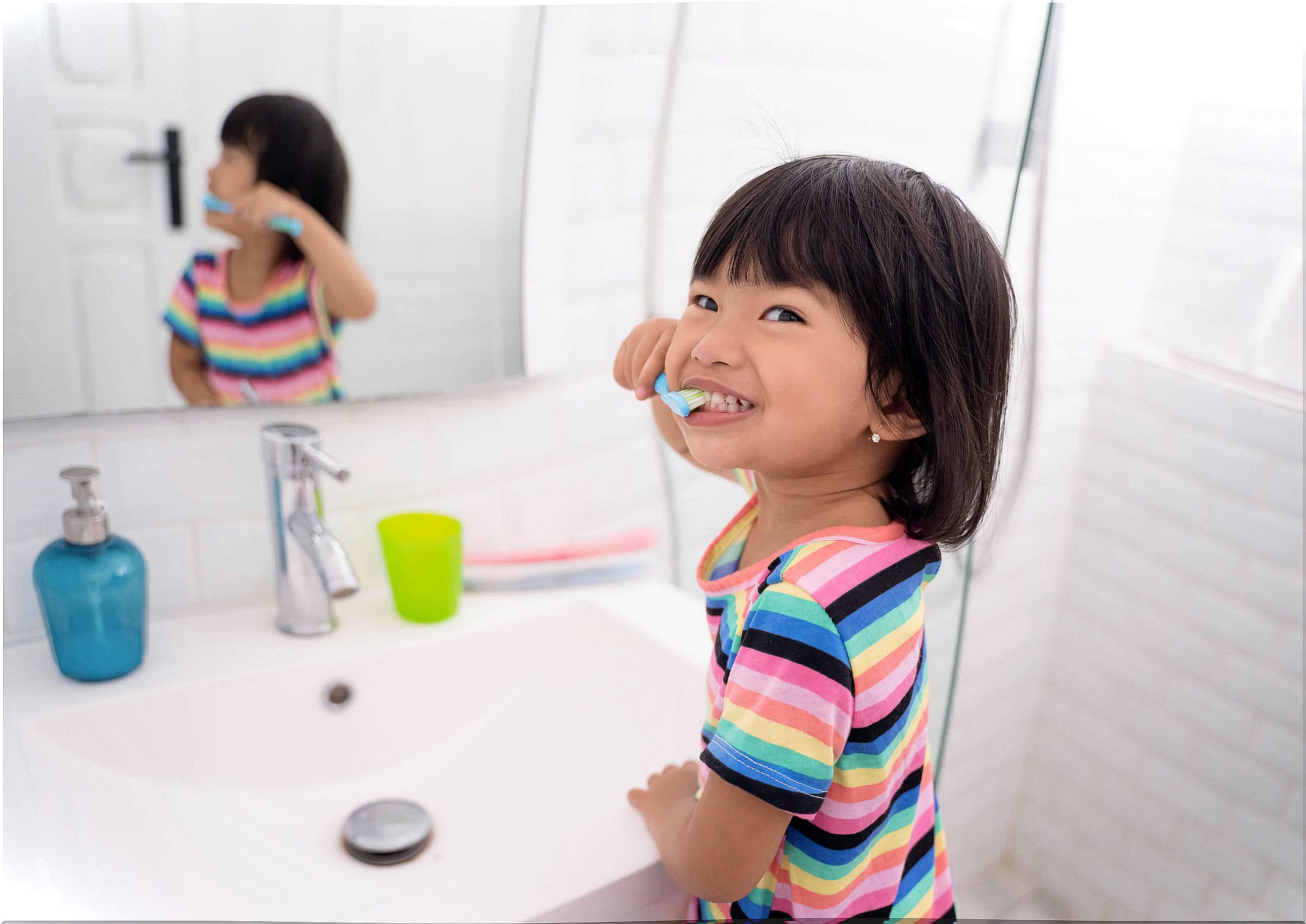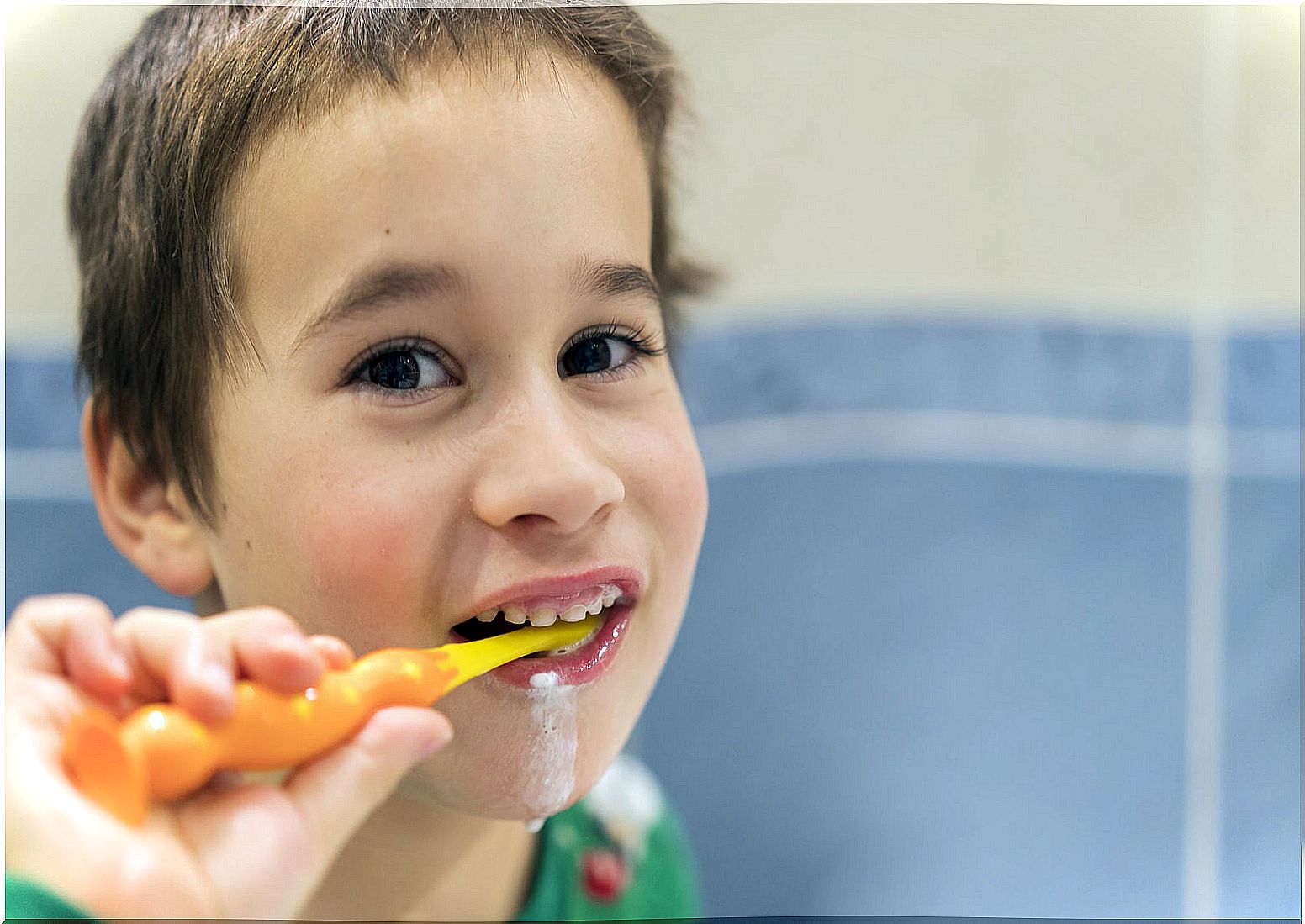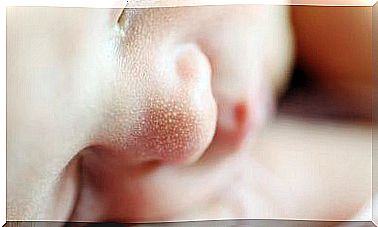Is Fluoride Good Or Bad For Children?

It is common for parents to wonder if using fluoride on children is safe and convenient. It is logical to consider if there are risks, what is the indicated concentration and how it should be administered in children.
Confusion and doubts may arise because a few years ago the American Dental Association (ADA) recommended not to use fluoride before 2 years of age or until the child knows how to spit. But today, since 2014, the same association, after reviews and research, suggests starting to use it in low amounts as soon as teeth appear.
In the following lines we tell you what fluoride is and why it is beneficial to prevent cavities. We also clarify what its risks are and the right way to use it in children.
What is fluoride?
Fluorine is a chemical element present in nature. It is found in soil, air, and water. Its concentration in the latter depends on its origin.
In addition, it can be found in small amounts in some foods such as oily fish, vegetables (cabbages and spinach), fruits (grapes), cereals (wheat and rice) and in black tea.

This mineral is very useful in the mouth for its effectiveness in preventing cavities. When combined with tooth enamel, the hydroxyapatite that makes up the teeth is transformed into fluorapatite. This is a much more resistant material against the action of bacterial acids.
Why use fluoride in children?
Fluoride in children plays an important role in strengthening their teeth and bones. As we have already mentioned, it improves the quality and resistance of enamel against the action of acids produced by bacteria in the mouth. Thus, it is able to prevent the appearance of cavities and even treat the first signs of this disease.
Tooth decay is one of the most common childhood diseases. It is a multifactorial condition in which the bacteria in the mouth, combined with other nutritional and social factors and individual characteristics of the person, produce acids that remove minerals from the dental elements.
The elimination of these bacteria mechanically, with tooth brushing, is essential for the prevention of the disease. However, it is proven that the use of fluorides in the mouth reduces the risk of cavities.
Its action consists of, on the one hand, inhibiting or delaying enamel demineralization and, on the other hand, promoting remineralization when there has already been loss of crystals. In addition, its presence in the oral environment reduces bacterial proliferation.
How to use fluoride in children?
Fluoride can be incorporated into the mouth in two main ways. Systemically, which is through the intake of a product that contains the mineral, and topically, which is applied directly to the oral cavity.
Systemic route
Here fluoride enters the body through food intake or drinking water. It is absorbed by the digestive mucosa, passes into the bloodstream and is distributed to the tissues, depositing mainly in bones and teeth.
The most common way to incorporate fluoride in this way is through drinking water. It is necessary to know that it has an optimal and safe concentration (0.7 to 1.2 milligrams per liter), since higher levels can be toxic and lower levels may require the use of supplements in patients at high risk of cavities.
In general, the water from the public network, which comes from the tap, contains optimal levels of fluoride and is safe for the population.
The action of fluoride in children systemically occurs in the pre-eruptive period, that is, when the teeth are still forming within the bone. Its availability during the formation of teeth is convenient, but its effect on caries prevention is less than the topical route.
Topical route
Here the fluoride is applied directly on the teeth already erupted, being more effective when the tooth just comes out because it is more porous and can better incorporate the mineral. Includes toothpastes, mouthwashes, and gels and varnishes used by dentists in the office.

Fluoridated toothpaste is what parents use at home with their children. The important thing about them is that attention is paid to ensuring that the concentration of fluoride they contain is appropriate for the child’s age.
The ADA recommends that the fluoride concentration in toothpastes for children 0-3 years old be 500 parts per million (ppm), 3-6 years old 1000 ppm and for children over 6 years old 1500-2000 ppm. As here the mineral content is higher, you must take care of the dose of paste that is placed on the children’s brush and try not to swallow it.
As we have already mentioned, it is currently considered appropriate to start dental hygiene with fluoride paste as soon as the teeth erupt. Only one paste stain is placed on the brush (less than a grain of rice) and it is cleaned with paste no more than twice a day. Tilting the baby’s head slightly down helps the paste and saliva to fall off and not swallow as much of the product.
Starting at 3 years of age, the dose is the size of a pea and young children should be encouraged to spit out the paste and not swallow it. This is the age at which they begin to learn to cough. Brushing should be done by adults up to 6 or 7 years old and then supervised.
Other fluoride products for children
With regard to rinses with fluoride, it will be the dentist who indicates them according to the risk of cavities of the child. In general, they are not used before 6 years of age, since it is necessary for the child to be able to spit well.
The gels and varnishes that we mention are for professional use, in the dental office, and it will be the dentist who places them according to the need of each case. It is common to perform fluoride topications on newly erupted permanent teeth.
Risks of fluoride in children
The regular use of fluoride does not pose a risk to human health. Its most common associated danger is dental fluorosis, although it is not so common.
This condition appears due to the excessive consumption of fluoride in the period of tooth formation. In other words, after 8 years of age, after the pieces appear in the mouth, the risk disappears.
Fluorosis is associated with the use of waters with a high content of the mineral that is not analyzed, happening endemically. Your risk from using dental products topically is lower, except for some accidental excessive intake.
It looks like white, yellow, or brown spots on the surface of the tooth, depending on the degree of the condition. It does not usually affect the function of the teeth or cause pain; only the appearance is altered.
To reduce the risk of dental fluorosis, it is important to find out the fluoride levels in drinking water. Also use a toothpaste with the appropriate mineral concentration for the child’s age and put only the recommended amount.
Teaching your child to spit and not swallow pasta is also helpful. Toothbrushing up to 6 years of age must be done by the adult and then must be supervised. It is suitable to leave the product out of the reach of infants.
That the little one swallows a small portion of pasta is not a problem. If the amount that is placed is greater and the child ingests it or eats toothpaste inadvertently, there may be an upset stomach.
In these cases, you should consult your pediatrician or call poison control to be sure. It is recommended to give them milk to drink, as calcium binds to fluoride in the stomach.

The benefits of fluoride outweigh the risks
The use of fluoride in children provides a great benefit to prevent the appearance of cavities, a very common disease in the mouth of children. The key is to strike a balance between giving enough to avoid dental problems and not giving too much to avoid causing other damage. Fluoride toothpaste used correctly is safe.
If you have any doubts regarding the use of fluoride in children, it is best to always consult a trusted dentist. The professional will evaluate the risk of caries and will be able to give the appropriate advice for each clinical case in particular.
If you prefer to use fluoride-free toothpastes, it is necessary to know that it only helps to clean the teeth and leave a pleasant sensation and taste in the mouth. But it doesn’t protect against cavities in the same way that fluoride products do.
Regardless of the decision that is made, it is always important to brush the child’s mouth to ensure the elimination of bacterial plaque. Another important aspect is to consult the dentist frequently. Visits every six months allow you to detect any problems early and act early.










